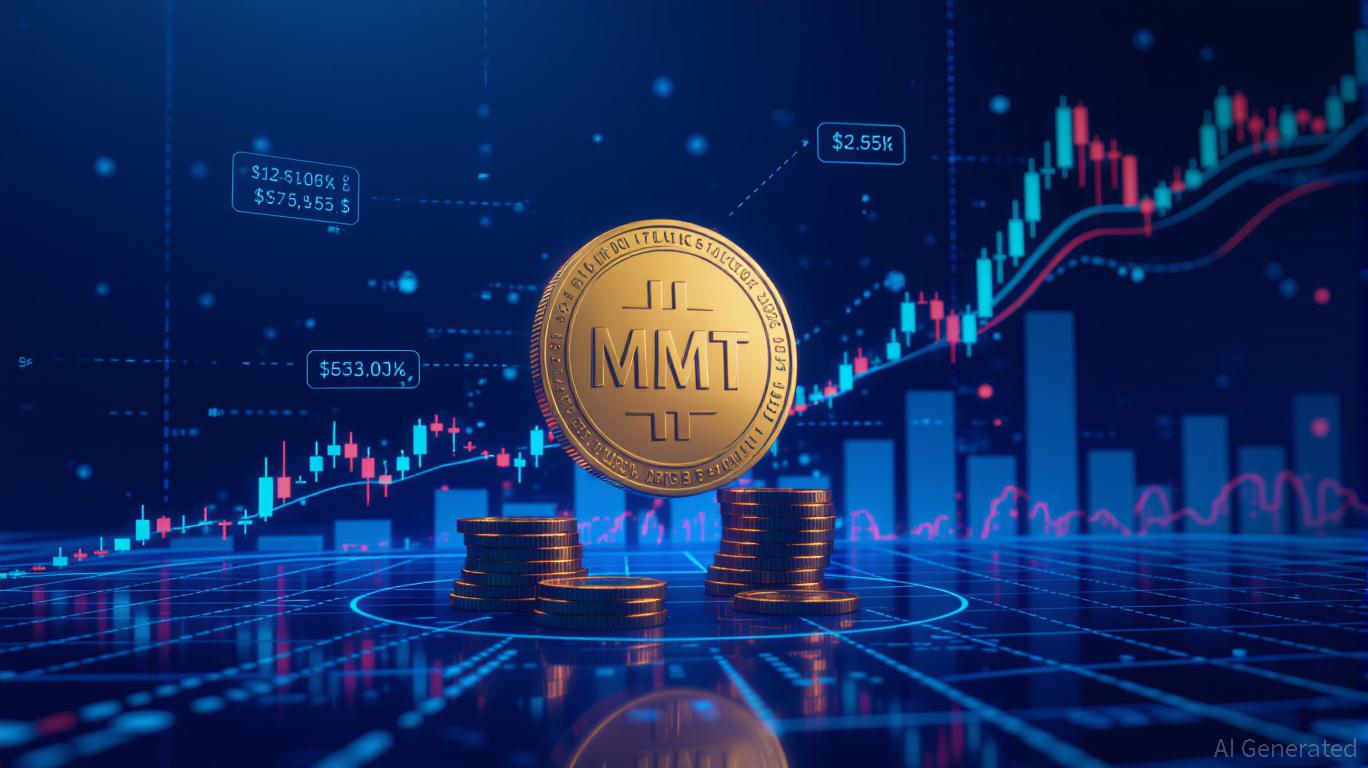Reevaluating MMT After Quantitative Easing: Insights from the Latest Rise in MMT Price Forecasts and Their Implications for Market Outlook
- Post-QE markets show MMT's influence on digital assets, with MMT token surging 1,300% driven by Binance airdrops and institutional buying. - Q2 2025 saw fixed-income markets shift to traditional risk-return metrics as MMT's dominance waned amid normalized term premiums and higher debt compensation demands. - Investors rotated to small-cap/value equities and AI infrastructure amid fiscal stimulus, while elevated valuations emphasized diversification and fundamentals. - MMT remains relevant for sovereign f
MMT’s Shifting Impact on Fiscal Policy and Digital Assets
The fundamental beliefs of MMT—particularly the view that governments with control over their own currency can run deficits without facing default—have sparked debate in both academic and policy arenas for years. Yet, its real-world impact has grown notably in 2025, especially within the digital asset sector.
However, the dominance of MMT appears to be fading as more traditional economic models regain prominence. In the second quarter of 2025, the fixed-income sector
Investor Strategies in the Wake of QE
The third quarter of 2025 provides insight into how investors have adjusted to the post-QE landscape. After the Federal Reserve reduced rates by 25 basis points in September and hinted at two more cuts before year-end, market participants have revised their approaches to reflect a weakening job market and ongoing inflation
Stock markets have experienced a significant shift, with leadership moving from large-cap growth companies to small-cap and value stocks, reflecting a broader hunt for undervalued assets amid increased fiscal stimulus

The
MMT
Token Rally: Hype or Fundamentals?
The Momentum (MMT) token’s dramatic 1,300% increase in 2025 has captured widespread interest, but its price movement seems to be driven more by external factors than by MMT’s theoretical foundation. Bitget’s analysis attributes the surge to Binance airdrops, institutional investments, and broader trends in crypto speculation—demonstrating the speculative tendencies of digital assets in the post-QE era
This gap between theory and real-world outcomes prompts important questions for investors. Can MMT’s concepts serve as a reliable guide for asset allocation in markets increasingly shaped by algorithms, regulatory changes, and economic uncertainty? As of 2025, the answer appears to be mixed: MMT remains a valuable lens for understanding government fiscal policy, but it offers limited accuracy when forecasting the movements of individual tokens or stocks.
Conclusion: Integrating MMT with Traditional Investment Approaches
The post-QE period calls for a well-rounded investment approach—one that recognizes MMT’s impact on economic policy but bases portfolio decisions on established risk management practices. For investors, this means managing the volatility of speculative assets like the MMT token while capitalizing on fiscal momentum in areas such as AI infrastructure and small-cap stocks. For policymakers, it highlights the importance of aligning MMT-inspired fiscal actions with long-term growth goals, ensuring that expansive measures do not unintentionally create asset bubbles or drive up inflation.
As financial markets continue to change, the relationship between MMT and investor behavior will remain a critical topic. The latest surge in MMT price forecasts is not just a sign of theoretical enthusiasm, but also an indicator of how investors are navigating the complexities of the post-QE environment.
Disclaimer: The content of this article solely reflects the author's opinion and does not represent the platform in any capacity. This article is not intended to serve as a reference for making investment decisions.
You may also like
Tokenized Stocks Gain Momentum as Crypto Meets TradFi
Taurus’s Twofold Function Accelerates the Integration of Blockchain into Mainstream Finance
- Taurus SA joins Canton Network as a Super Validator, expanding custody services to support $6T+ tokenized assets via the Canton Token Standard. - As a core infrastructure partner, Taurus enhances Canton's security and governance while enabling 24/7 markets and privacy-compliant operations for institutions. - The partnership with Deutsche Bank , Santander , and State Street underscores Taurus's role in bridging traditional finance and blockchain innovation through interoperable, compliant infrastructure.
Web3 Transformation: Efficiency and Regulation Take Precedence Over Privacy Concepts
- Web3 infrastructure prioritizes performance and compliance over theoretical privacy models like garbled circuits and FHE. - Hanyang University's 108 Gb/s PAM-8 receiver advances data center efficiency with 1.95 pJ/bit energy optimization. - Wemade's KRW stablecoin alliance rebuilds trust through regulated infrastructure, avoiding direct stablecoin issuance. - Coinbase's $1.5B Q2 revenue highlights crypto market volatility, emphasizing institutional infrastructure diversification. - Alphabet's $1B+ cloud
Hyperliquid News Today: MUTM Soars by $19M While MegaETH Plummets: Real Performance Outshines Hype in the Evolving Crypto Landscape
- Mutuum Finance (MUTM) raised $19M in Phase 6 presale, with 250% price growth since 2025 launch and 90% allocation completed. - KuCoin secured AUSTRAC and MiCA licenses, expanding compliance reach across 29 EEA countries while acquiring payment firms to strengthen institutional credibility. - Bitcoin surged past $90K amid Fed rate cut speculation, contrasting MegaETH's $1B token sale collapse due to technical failures, highlighting execution risks in volatile markets. - Crypto exchanges pledged $3.19M for
